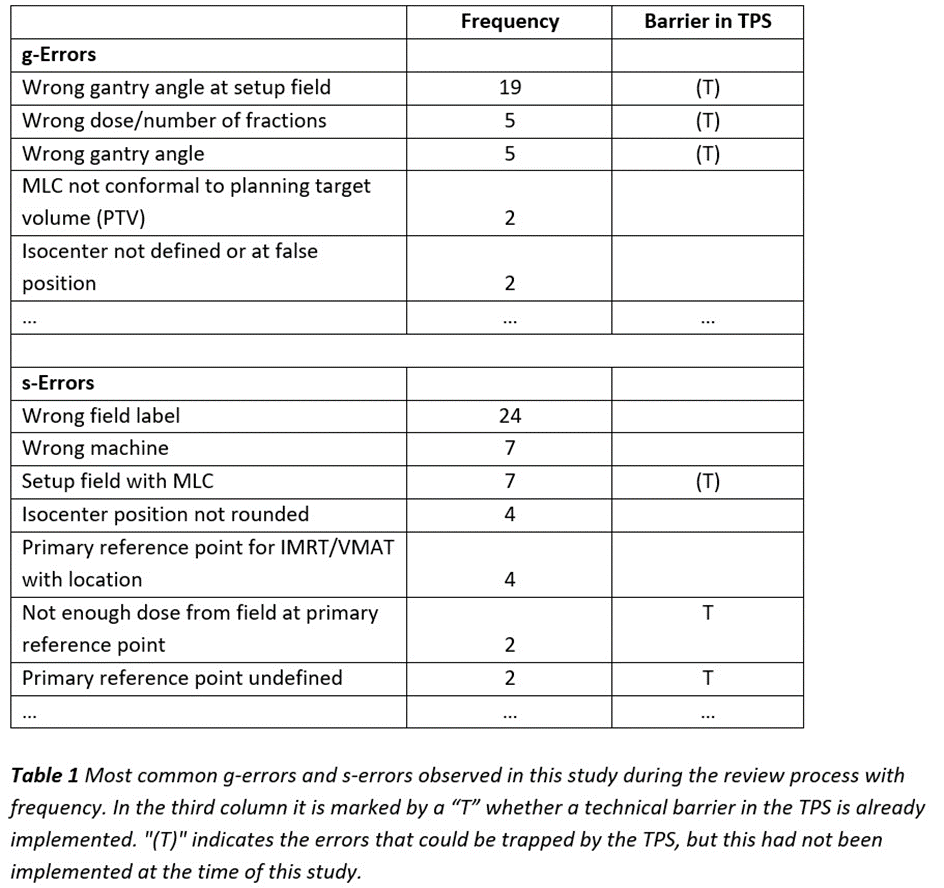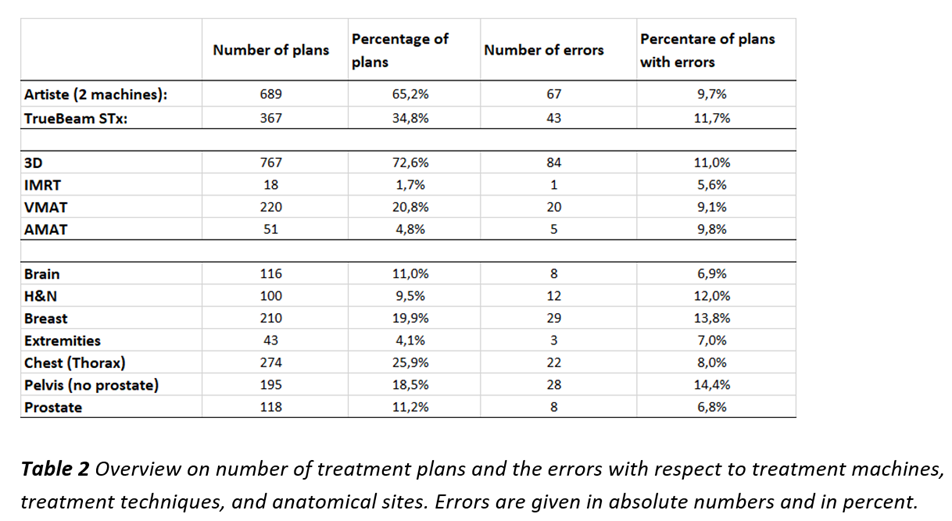Errors detected during physics plan review for external beam radiotherapy treatment plans
Frank-André Siebert,
Germany
PO-2068
Abstract
Errors detected during physics plan review for external beam radiotherapy treatment plans
Authors: Frank-André Siebert1, Markus Hirt1, Marc Delaperrière1, Jürgen Dunst1
1Clinic of Radiotherapy, UKSH, Campus Kiel, Kiel, Germany
Show Affiliations
Hide Affiliations
Purpose or Objective
Risk management in radiotherapy is of high importance and must be individually conducted for each clinic. Only few data is published on errors occurring in the treatment planning process of external beam techniques. The aim of this study was to investigate errors detected during the process of physics plan review in external beam radiotherapy treatment plans.
Material and Methods
All errors observed by one senior medical physicist over a period of 14 months during the physical review process in a university clinic using three linear accelerators (2x Artiste, 1x TrueBeamSTx) and an ARIA/Eclipse v13.6 treatment planning system (TPS) are reported. The errors were grouped and evaluated regarding treatment machine, technique, and treatment site. Furthermore, a correlation between frequency of errors and staff shortage was analyzed. Correlations were analyzed using Chi-square tests (p<0.05 was assumed statistically significant).
Results
Subgroups of grave errors (g-errors, can harm the patient) and slight errors (s-errors, cannot harm the patient but might delay the treatment workflow or result in inconsistencies in reporting) were defined to consider the different impact of the errors on the patient and clinical workflow. 1056 plans were reviewed and 110 errors (41 g-errors, 69 s-errors) with 29 different error types detected. The most common g-errors and s-errors were “Wrong gantry angle at setup field” (n=19) and “Wrong field label” (n=24), respectively. Table 1 lists the most frequent errors. However, some errors can already be detected by a technical barrier in the TPS.
A correlation of frequency of errors and treatment device, technique, or anatomical site could not be found. In Table 2 an overview of the results is shown. No correlation between staff shortage and frequency of errors was observed (p=0.298).
Conclusion
The process of treatment plan review is a relevant topic to consider in risk analysis of the radiotherapy workflow. A distinction of errors in g- and s-errors is useful and can simplify the risk analysis. The physical review process in our clinic will be improved through the use of digital dose prescriptions and treatment planning templates in the TPS.
In this study the necessity of physics plan review in the clinic was clearly demonstrated by presenting original data. However, each clinic must develop its own risk management system that fits its individual processes, as well as its own assessment of the distinction between g- and s-errors.

